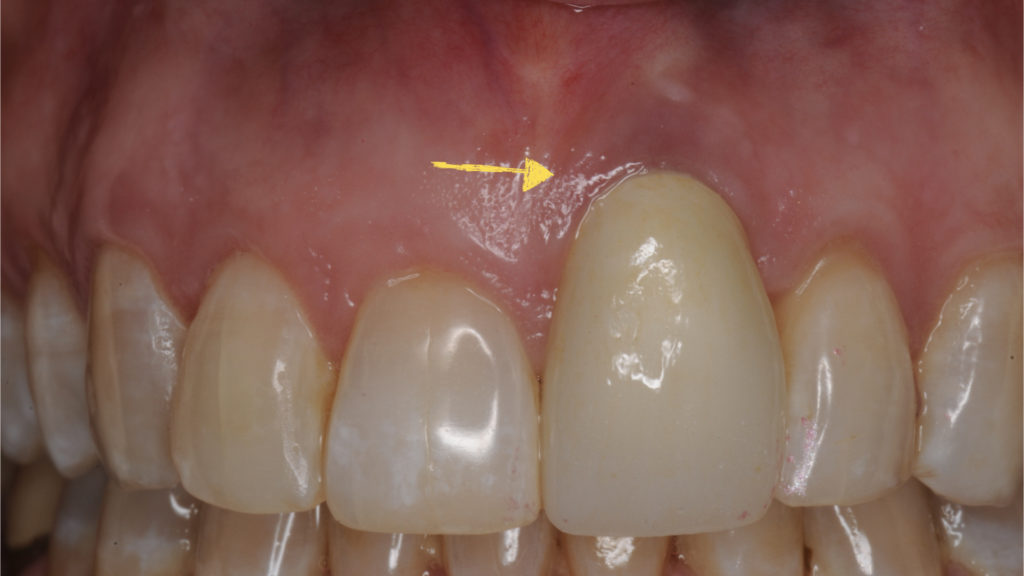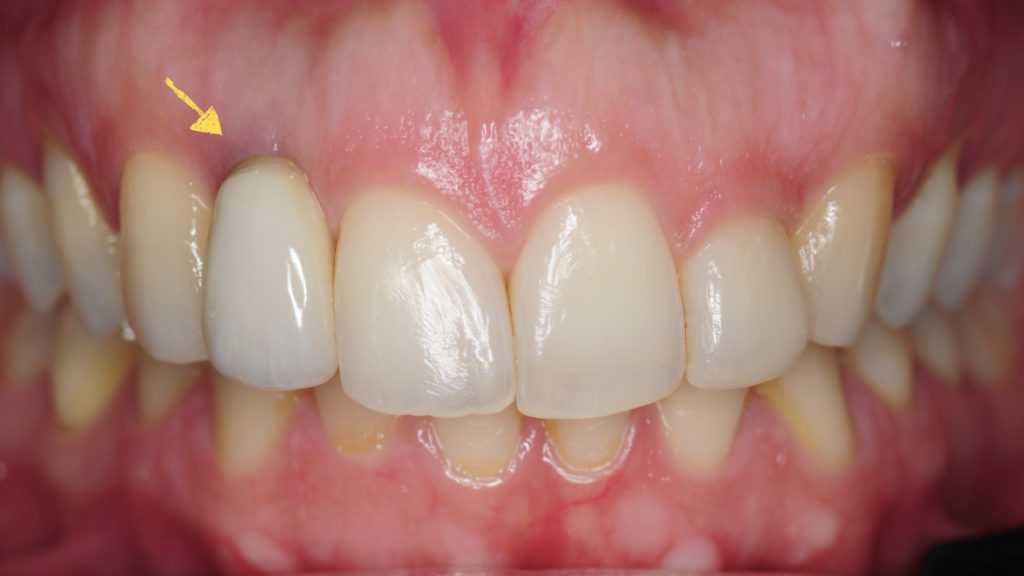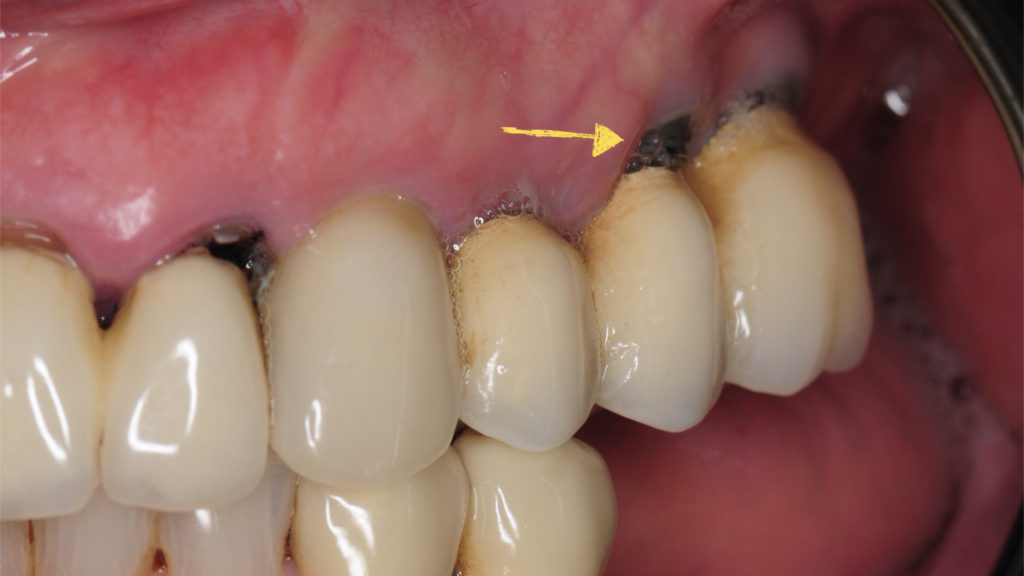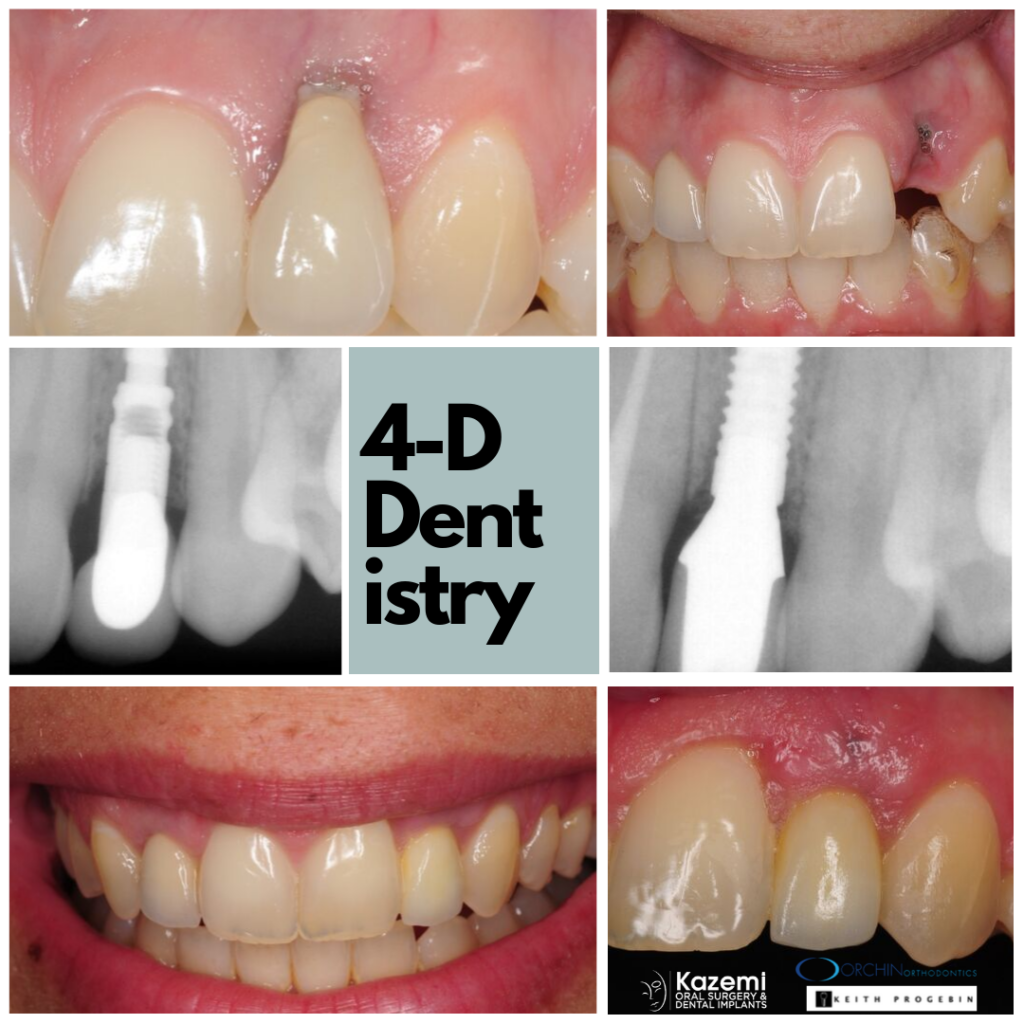One of the most common dental implant complications is the presence of dark or black lines and gum recession around crowns. This is a major concern if it develops in the smile zone because of the unsightly dark lines, gum recession, and disproportionate restorations easily visible when smiling. To compensate bone and gum tissue recession, the crowns are made longer further contributing to the poor aesthetic outcome.
There are three major causes of dark or black lines around crowns and gum recession associated with dental implants:
- Poorly positioned dental implants with excessive angle or inclination: This occurs due to poor planning and ‘free-hand’ placement of the dental implant with excessive angle or inclination outward. This results in gum recession and exposure of the underlying implant surface or its abutment and hence the dark lines. Such complication can be prevented by following digital work-flow and computer-assisted guided implant placement for total precision.

- Inadequate bone or gum tissue covering the implant: If the existing bone or gum tissue is thin at the time of implant placement, even with slight tissue remodeling, recession occurs leading to exposure of the implant surface, abutment, or margin of the crown (if made of metal & ceramic). This results in the black lines or grayish color of the gum tissue as the implant surface becomes exposed and tranilluminates through the tissue. To prevent this complication, the surgeon must develop proper amount of bone and gum tissue before or at the time of implant placement. Thick overlying bone and gum tissue improves aesthetics and stability, and increases the longevity of the implant.

- Peri-Implantitis: Inflammation or infection around dental implants leads to bone and gum tissue loss. This results in exposure of the implant surface or abutment and hence the visible black line and gum recession. Peri-implantitis can be prevented by precise placement of implants, assuring adequate bone and gum tissue coverage, avoiding smoking, and maintenance of regular professional and home hygiene care.

Treatment options range from bone and gum tissue graft, removal of the implant with development of missing bone and gum tissue, and replacement with a new implant following restorative-guided and digital work-flow approach. Following proper diagnostics, an effective treatment plan can be offered with predictable outcome. Here is an example:

If you are experiencing complications with your dental implants, contact us for a consultation and learn about treatment options.
Dr. H. Ryan Kazemi is a board-certified oral and maxillofacial surgeon in Bethesda, MD.